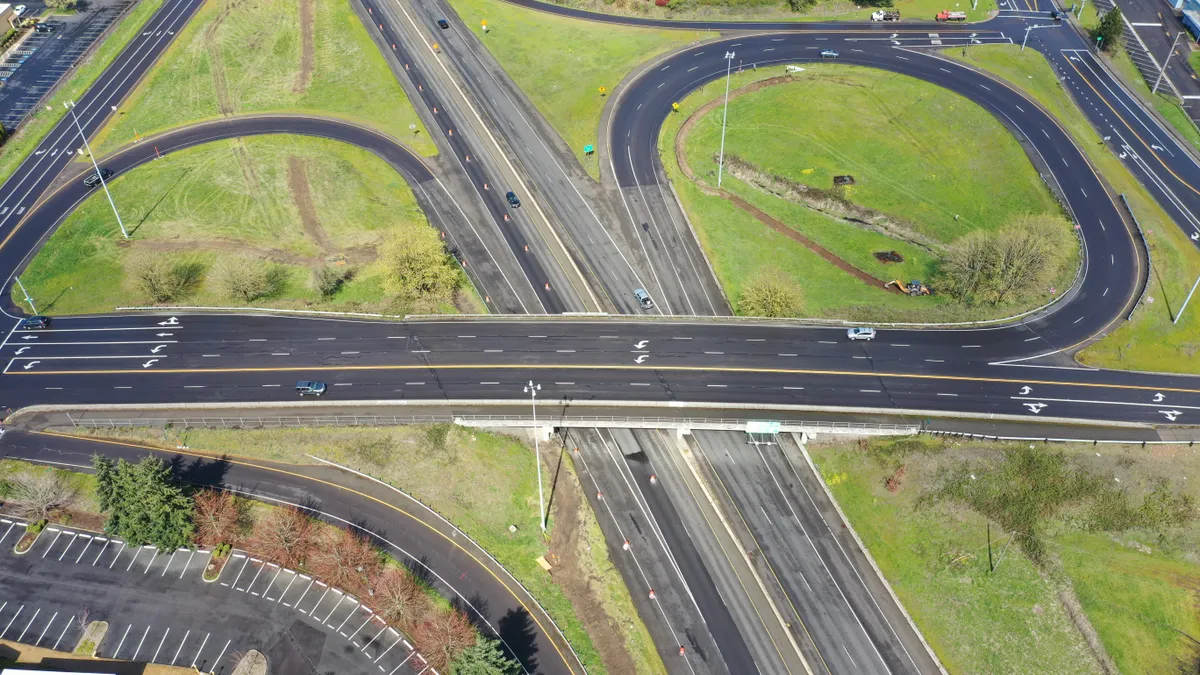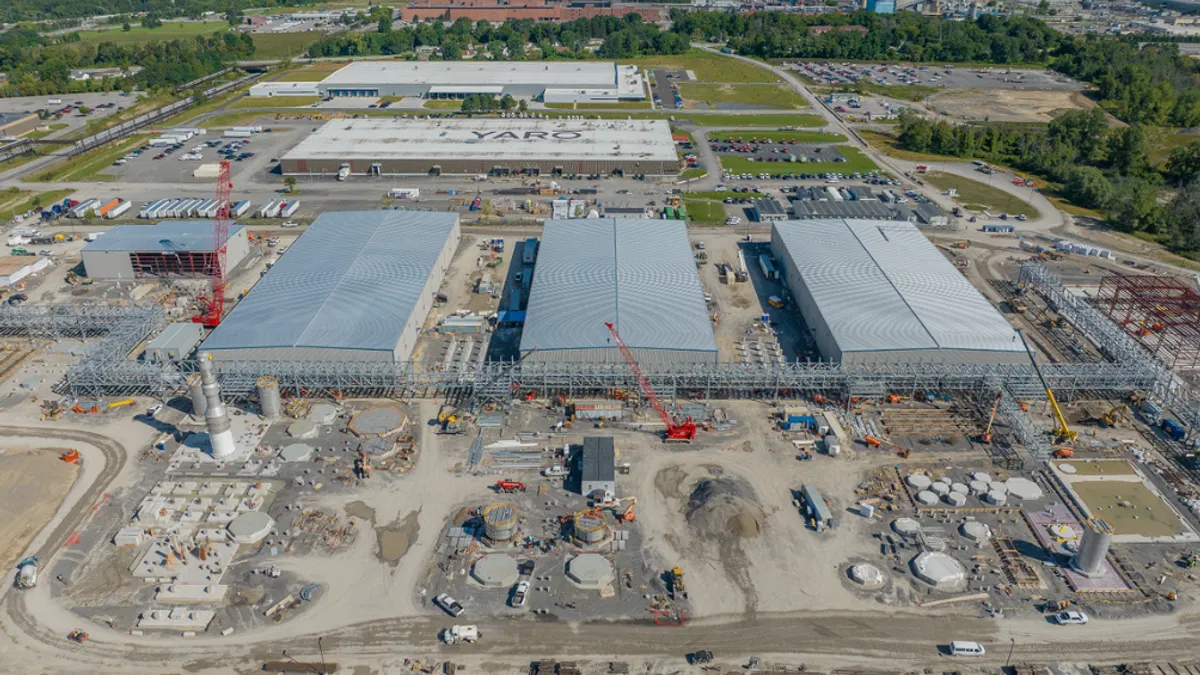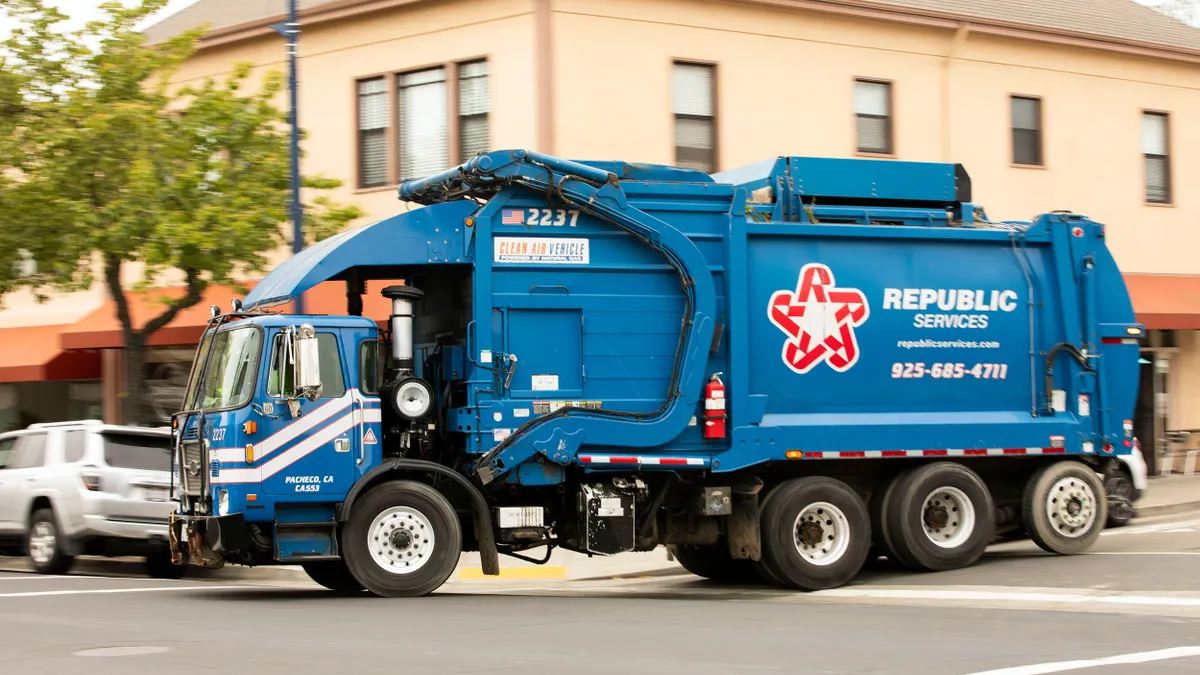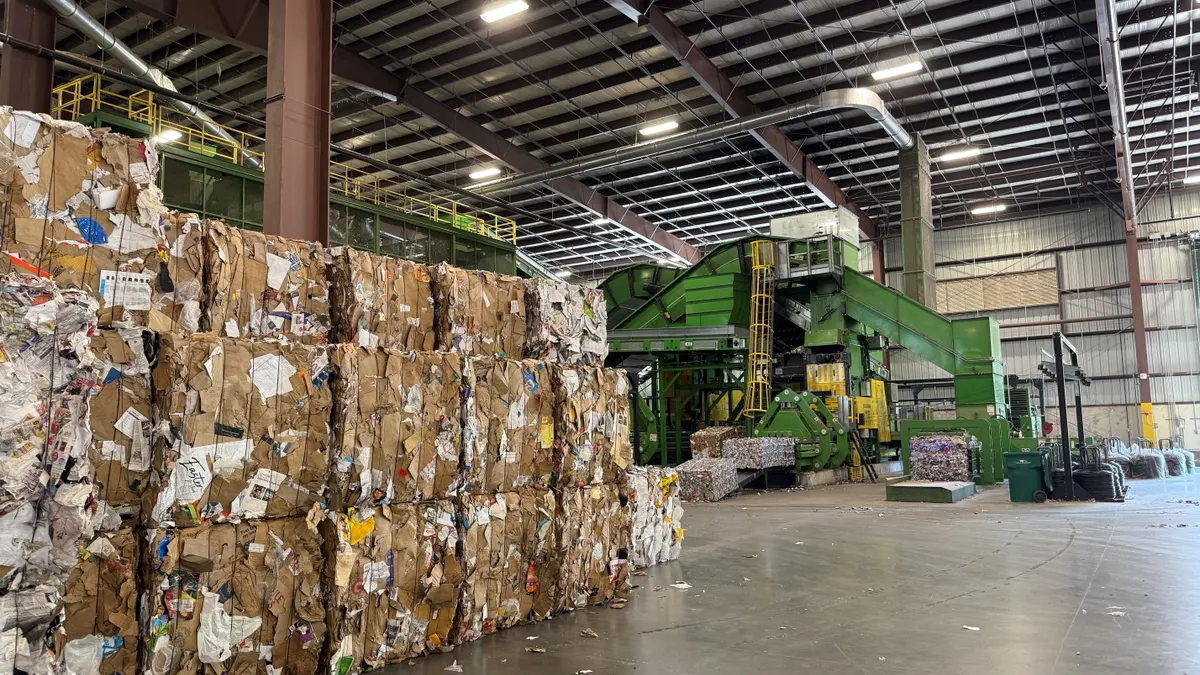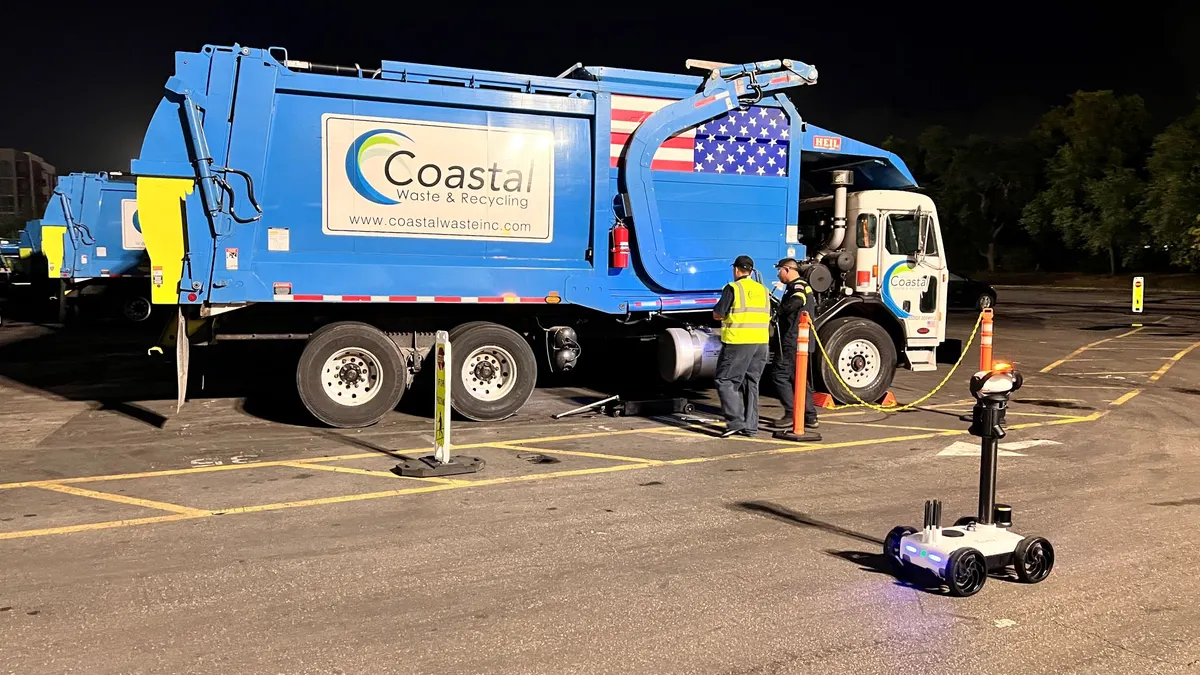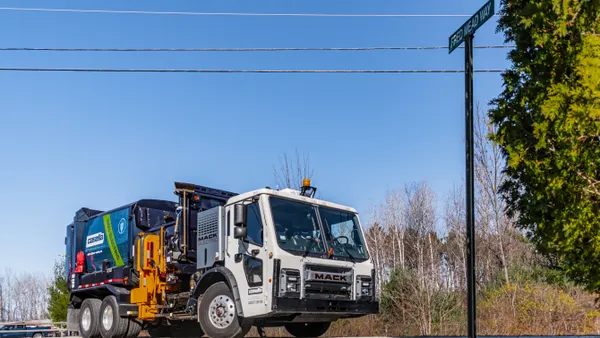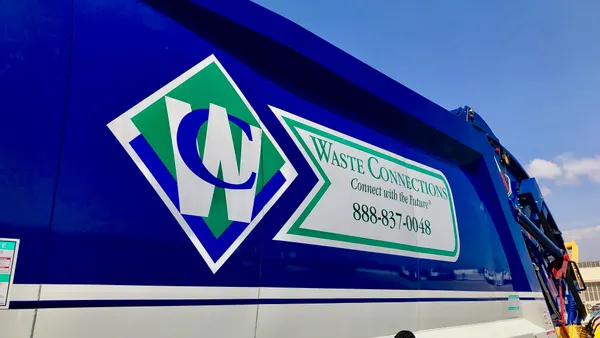The coronavirus pandemic has added a whole host of new concerns for service providers, but it may have temporarily contributed to a rare decline in vehicular incidents over recent months. That downturn comes as safety professionals caution the trend may not continue and say ongoing vigilance is still needed for a variety of reasons, especially as other concerns like facility fires and heat exposure loom large.
During the initial weeks of the pandemic, the Solid Waste Association of North America (SWANA) reported eight worker fatalities over a span of three weeks. The trend was described as a "significant increase" and a concerning one following a recent report of 53 North American worker fatalities for the entirety of 2019. Yet as stay-at-home policies kicked in and economic activity declined, the trend reversed.
"Over the last two months there has been a precipitous decline in the number of those incidents," SWANA CEO David Biderman told Waste Dive in mid-June. "We're hopeful that will continue in the future as we return to the new normal."
While it was deemed too early to define any clear trends, Biderman said one factor could be a decline in overtime and shorter commercial routes in certain regions.
"That meant that people weren't tempted to be rushing to finish their route by a certain time," he said. "One of the things to keep an eye on is whether a return to normal waste volumes on the commercial side correlates with increased accidents and fatal accidents."
Shifting roadway factors
In recent weeks the industry has seen fatalities, including the recent death of a Charlotte, North Carolina worker struck by a motorist along with others in the state according to Biderman.
“As residential and commercial volumes continue to fluctuate, one thing remains constant, motorists are crashing into waste collection vehicles, often with fatal consequences," he said this week.
It remains too early to draw conclusions on how these shifts will affect overall numbers for 2020, but so far SWANA and others say it appears the residential waste uptick has not led to an increase in injuries. Multiple companies reported lower overall incident rates during the pandemic's initial months as well, according to SWANA and the National Waste & Recycling Association (NWRA).
"Roadway incidents ... look to be down. Incident rates for injuries also appear to be down," said Kirk Sander, vice president of safety and standards for NWRA, in mid-July.
Sander also noted it was too early to define clear trends without more data, but he said one potential factor was heightened engagement from workers around safety guidance due to concerns over coronavirus exposure.
"A consistent message is showing that [outreach and information] really pays off," he said, adding it was possible "people were paying more attention to the safety message because they were worried about COVID."
Data is still fresh, but multiple safety professionals attribute the temporary shift — at least in part — to a decline in traffic during the pandemic's opening months. Recent National Safety Council (NSC) data showed a 25.5% decline in vehicle miles driven in the month of May year-over-year, and anecdotal reports show traffic was especially low in certain major cities.
"You didn't have the exposure out there, the vehicles competing for the space," said Richard Bleser, a senior vice president specializing in fleet safety at Marsh Risk Consulting. At the same time, Bleser said this didn't necessarily mean a wholesale decline in safety incidents for the broader trucking sector. "We saw an increase in the number of speeding events in the telematics data, and also saw that correlation and increase in the severity of collisions we're having," he said.
In addition, the NSC data showed a 23.5% increase in the national fatality rate per miles driven for May year-over-year. Potential factors included stress, anxiety and higher rates of substance abuse. Those factors could lead to more distracted driving, and may also be one factor behind the solid waste sector's initial uptick in fatalities during the pandemic's official onset.
"Any times there's a little bit of fatigue or distress or unknown out there, it leads to poor decision making," said Bleser.
Other safety issues remain a concern
Beyond these initial shifts in traffic patterns and vehicular incident rates, the pandemic may have also contributed to an upward shift in facility fires. While these incidents don't always result in employee injury, they can quickly turn serious and have major consequences. Ryan Fogelman, vice president of strategic partnerships for Fire Rover, keeps the most detailed public data on these incidents and said he's seen the clear start of a trend.
"Waste fires are up," said Fogelman in mid-July, pointing specifically to an uptick at waste and recycling facilities from March through June. In addition to the mounting issue of lithium-ion batteries the industry has been grappling with in recent years, Fogelman said this recent trend is likely due in part to a shift from commercial to residential volumes that may have a more varied stream of materials.
"We did the biggest spring cleaning we've ever done in our lives," he said, adding this was coupled with a significant uptick in volumes due to the initial wave of quarantine purchases, akin to levels normally only seen at the height of winter holiday season. "Basically it was Christmas in April."
Professionals report they've generally seen the industry adapt to this turbulent safety environment through consistent messaging and new precautions, but this year's challenges appear ongoing. The recent spike in coronavirus cases has hit public and private sector service providers around the country, which in turn could increase fatigue due to staffing shortages.
Weather patterns have also not been helpful. Bleser noted the importance of staying safe, as unusually high heat levels will soon be joined by hurricane and wildfire seasons in various regions.
"All those different factors can introduce different forms of discomfort level and ultimately fatigue to the drivers," he said. "The importance of staying hydrated is utmost."
SWANA and NWRA have similarly been echoing this messaging around heat safety, amid a year that looks like it will be continually challenging for frontline workers.
"We're hearing more about heat-related incidents, so we have to keep that in mind," said Sander. "It just seems like it's one thing after another."



